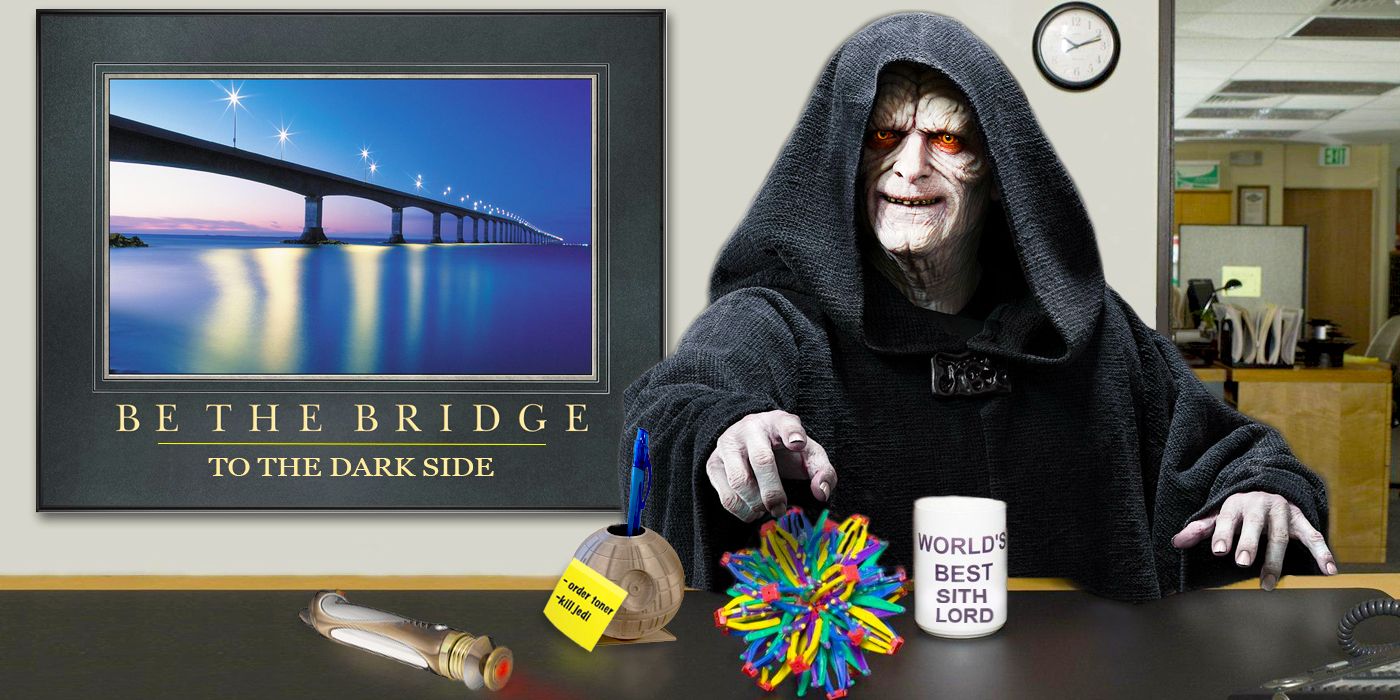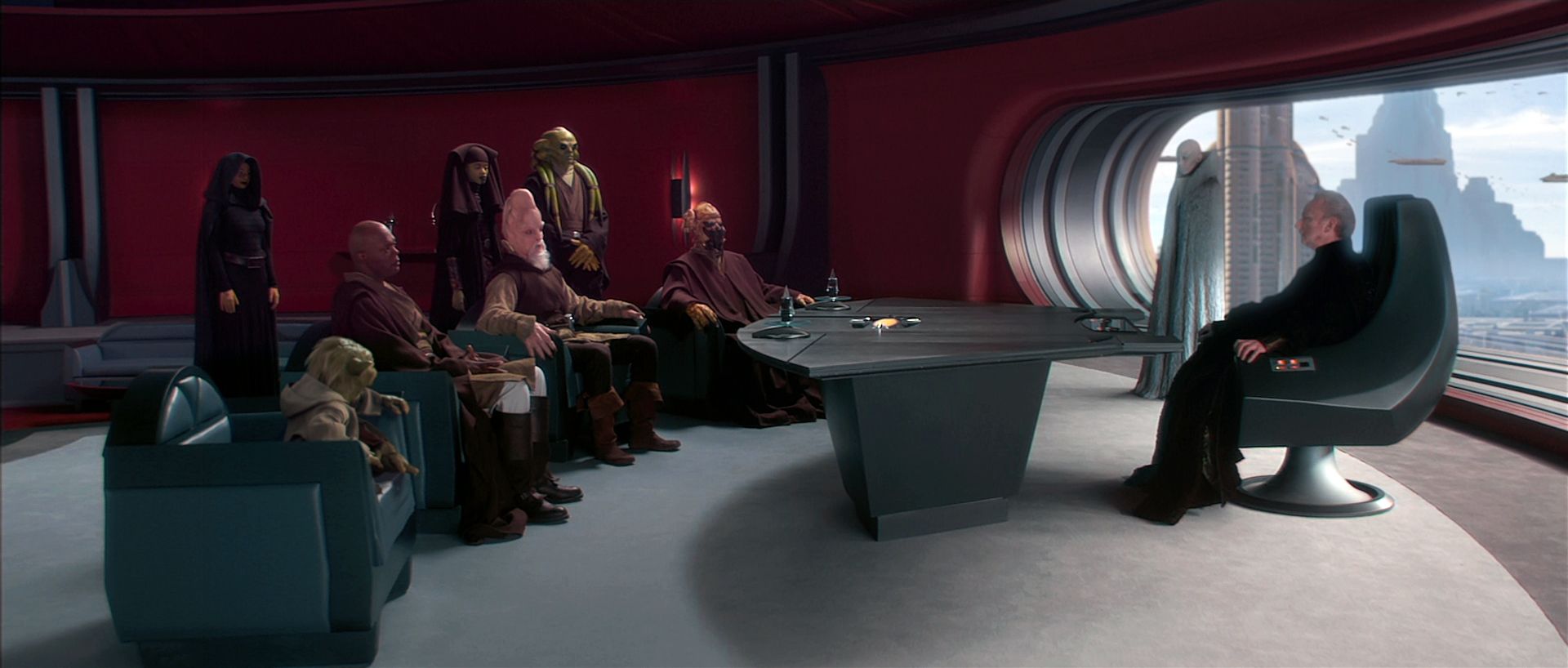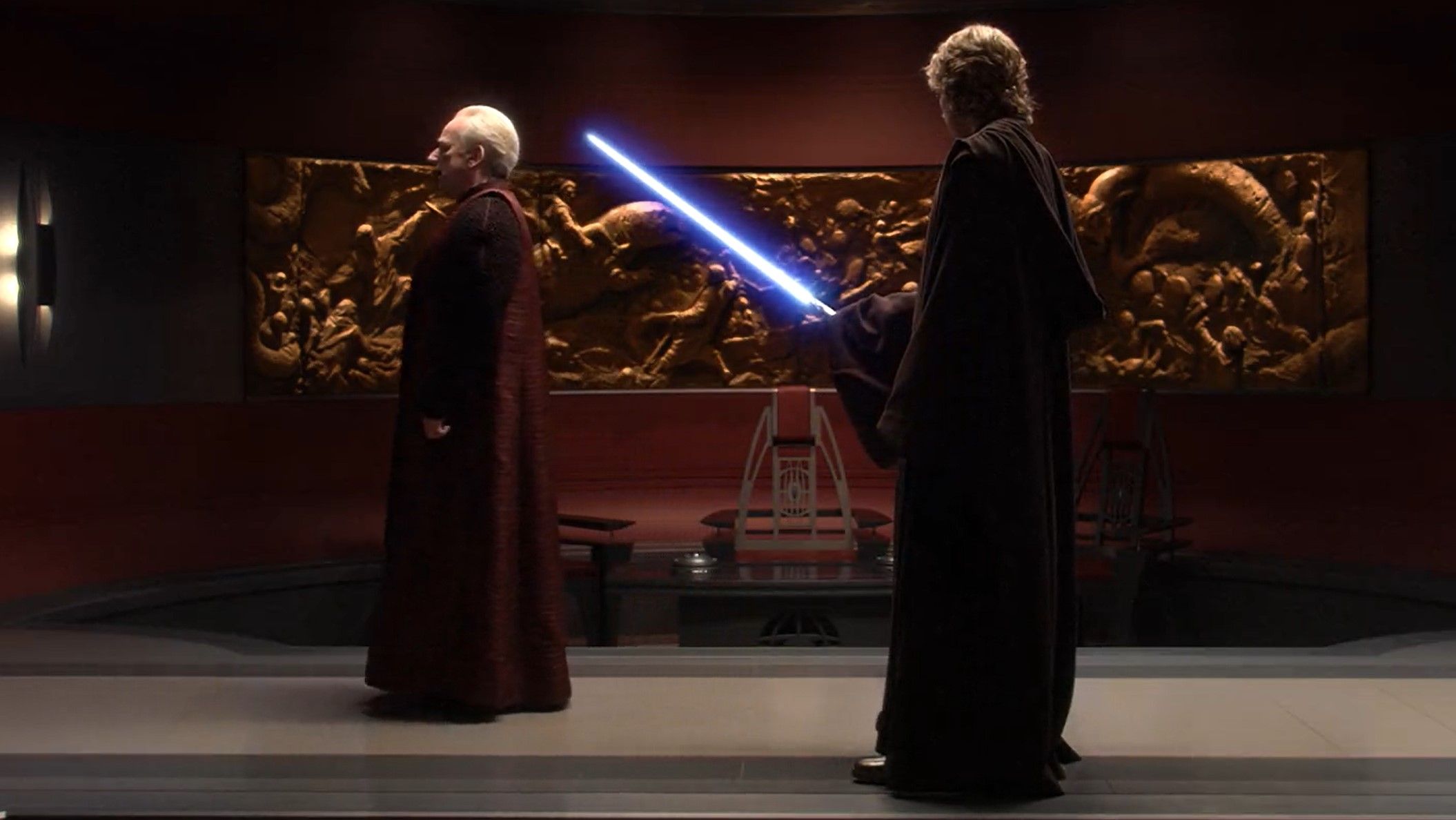While the rise of the Galactic Empire in Star Wars was the result of generations' worth of meticulous planning by the Dark Lords of the Sith to reclaim power over the galaxy, it was mostly brought about by the machinations of Sheev Palpatine, aka Darth Sidious. As Supreme Chancellor of the Republic, Palpatine concealed his true Sith identity while using his public persona and political power to execute his grand plan. But doing so meant he worked closely with the Jedi Order, even as he plotted their destruction.
During Palpatine's tenure as Chancellor throughout the final years of the Republic, he was able to keep his true intentions hidden from the Jedi through his mastery of the dark side. However, there were a few clues to Palpatine's true identity that the Jedi probably should have picked up on even without the assistance of the Force. Perhaps out of sheer arrogance, Palpatine lavished his official suite on Coruscant with all manner of extravagant memorabilia intimately connected to the history of the Sith.
The decadent red that adorned Palpatine's quarters could be seen as the first hint of his true nature, given that its color of Sith lightsaber blades and has long been associated with their order. This, of course, is easy enough to dismiss. As the most powerful politician in the Republic, Palpatine could be expected to indulge in a little regality in his decor. Upholstery aside, however, the items that Palpatine chose to display in his quarters were less easily dismissed once their true origins were known. It's more than a little disconcerting that the highest-ranking members of the Jedi Council, such as Mace Windu and Yoda himself, in their many meetings with the Chancellor, never recognized these artifacts as portents of the return of the Sith.
Among the items Palpatine added to his official suite were four bronzium statues depicting the Four Sages of Dwartii, ancient and controversial philosophers and lawmakers. While the Four Sages were highly influential figures in the formative years of the Republic, meaning the presence of such statues in the Supreme Chancellor's suite was not entirely surprising, these statues, in particular, hailed from a time when the galaxy was under the rule of the Sith. The Sages themselves, though historically significant, were also not exactly icons of political virtue. They were effectively the Star Wars equivalent to Machiavelli, renowned for their cunning duplicity and ruthless coldheartedness. One of the Sages, Braata, even advocated for the study of the Dark Side of the Force.
Palpatine's taste in extravagant historical artwork was also seen in his bas-relief of the Great Hyperspace War. This sculpted piece occupied one of the walls of the anteroom connecting the Chancellor's public and private offices and depicted an ancient battle between Jedi and Sith. Certainly, the piece was open to interpretation and many Jedi saw it as a sign of respect from Palpatine to the Jedi Order, who were the ultimate victors in the depicted conflict, but Palpatine viewed the battle scene as a display of Sith superiority.
Most prominent in its Dark Side connection among Palpatine's collection, however, was the Sith chalice that sat opposite the bas-relief in the anteroom. This item was an incense burner, containing incense from the Sith homeworld of Korriban, which could be used in certain Sith rituals. The chalice may have been recognized by anyone with knowledge of the Dark Side, but Palpatine was so certain that nobody would realize what it was he displayed it publicly.
This arrogant act of mockery goes some way to answering the question of why Palpatine would choose to display these Sith treasures, practically announcing his true identity to the Jedi. Hiding in plain sight was always his style, enacting his secret master plan from the forefront of galactic politics, but his display of Dark Side artifacts meant more than that. Palpatine knew the Jedi had become complacent and corrupted by politics, and his display of Sith artifacts was a show of confidence, a statement of superiority and a mockery of the blindness of the Order. Darth Sidious proudly surrounded himself with symbols of Sith power to beckon in his inevitable victory in securing galactic domination.



